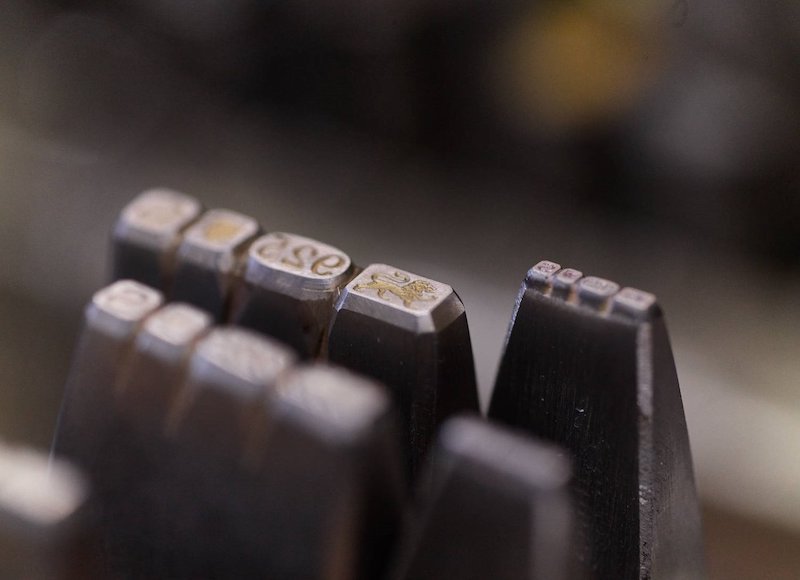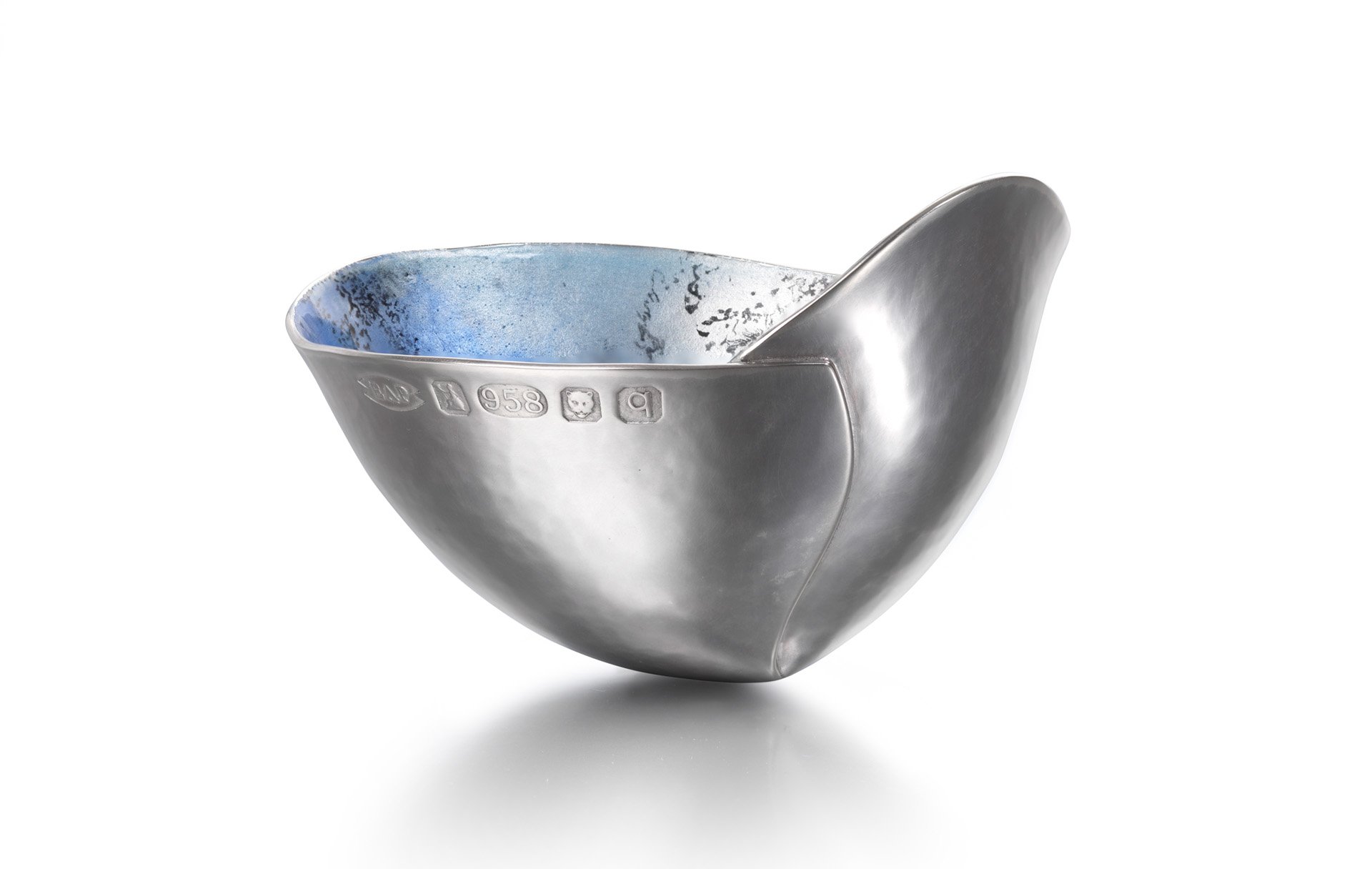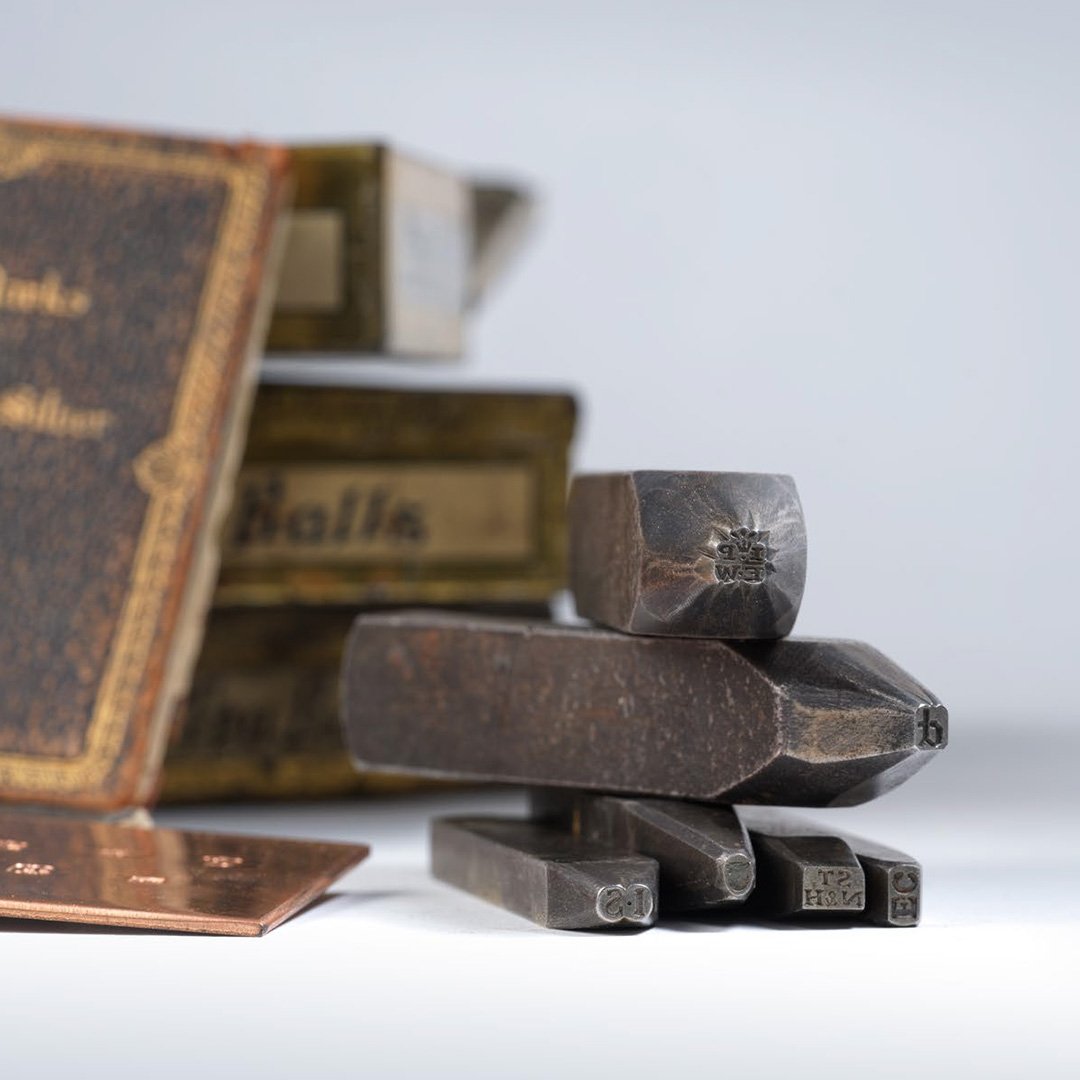
Hallmarking
The hallmark is a set of component marks applied to items made of gold, silver, platinum or palladium. It takes its name from Goldsmiths’ Hall, where Hallmarking began more than 700 years ago, and can tell you when and where an item was tested and marked, which metals it is made from and their purity or fineness, and who submitted it for Hallmarking.
At the Goldsmiths’ Company London Assay Office, we apply the full traditional UK hallmark, which is made up of five component marks.
Sponsor’s Mark
The first mark is the Sponsor’s or Maker’s Mark. It tells you who sent an item in to be assayed. Normally this is the person or company who made it, and the mark is composed of their initials inside a shield shape. The Sponsor’s Mark must be a minimum of two letters and a maximum of five letters. Each one is unique, and to make sure that makers with the same initials don’t get mixed up, two different fonts, and 45 different shield shapes are used.
Traditional and Millesimal Fineness Marks
The second and third marks are the Traditional and Millesimal Fineness Marks. The Traditional Fineness Mark tell you which metal an item is made from. The Millesimal Fineness Mark supplies more information, telling you both which precious metal an item is made from and how pure it is on a rating from 0–1000. A 999 mark means that the precious metal is as pure as it can be. The purity mark for each precious metal has a different shaped border, making it easy to tell the difference between metals that share the same colour, like silver and platinum.
Assay Office Mark
The fourth mark tells you which Assay Office tested and hallmarked an item. Today there are four Assay Offices in the UK, and each of them has a different mark. A leopard for the London Assay Office, an anchor for the Birmingham Assay Office, a rose for the Sheffield Assay Office, and a castle for the Edinburgh Assay Office.
Date Mark
The fifth mark is the date letter. This tells you when an item was hallmarked. The date letter changes every year on January 1. The font, case, and shield shape around the letter change once the alphabet has been completed so each letter is unique to a specific year.
Trace a hallmark
The hallmark is the UK’s oldest form of consumer protection. It can tell you where and when a piece of silver or jewellery was made, and who brought it to be hallmarked. The Goldsmiths’ Company Library and Archive team can help you to identify a wide range of historic hallmarks.
Find out how →
















